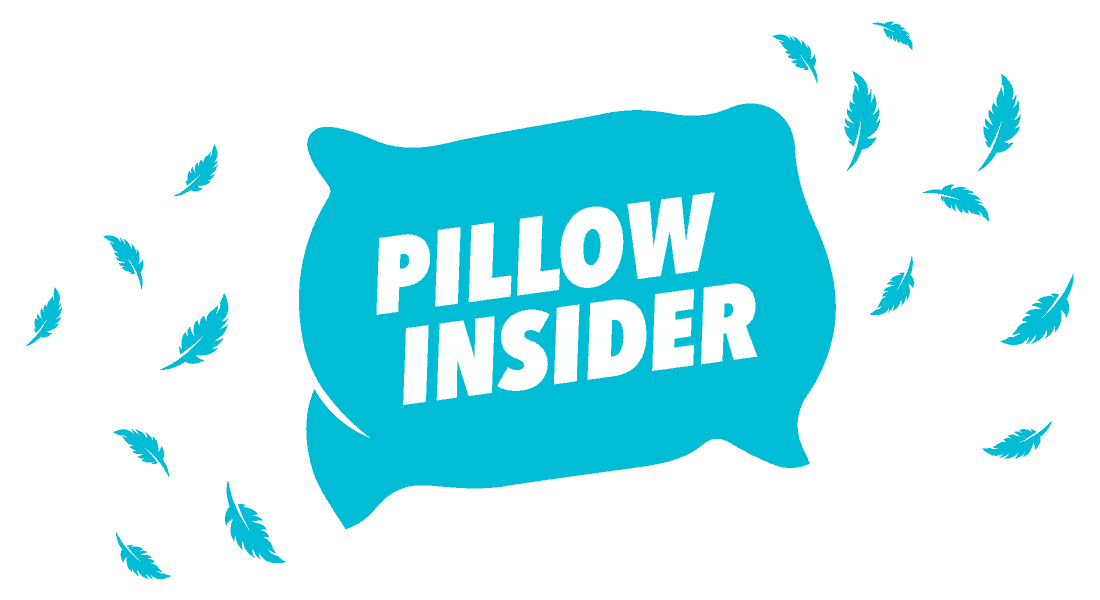What is the best kind of cotton sheet set to buy? You may constantly be asking yourself that question, trying to figure it out from the plethora of information available on the internet, each site touting a certain kind. I know my head spins when I try to understand and choose the best cotton sheets- it’s overwhelming for the brain!
I rate my sheets based on durability, quality, softness, fit, breathability, cost, and beauty. I have included some of my favorite Pima Cotton sheets here, so you can get an idea of what’s out there for you! I hope you can benefit from my research and make an informed decision that will add to the quality of your sleep!
Here, I will break it down into manageable pieces and give you everything you need or want to know about cotton sheets. You can confidently decide, knowing that I have scoured every imaginable source for you and done lots of research so that you don’t have to! Because I love to do research – going down rabbit holes is in my DNA!
Nestwell™ PimaCott® Sateen 500-Thread-Count Sheet Set in Oyster Mushroom
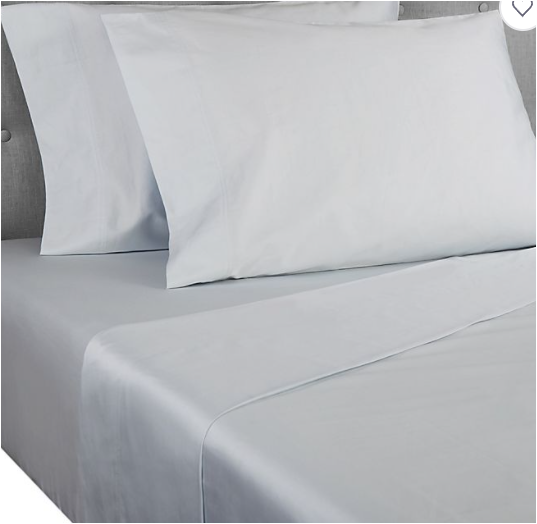
This striking sheet set in gleaming Oyster Mushroom sateen looks heavenly inspired. Rest assured that you have 100% Pima Cotton fabric with the PimaCott branding-no more guessing if you have the real thing.
- Nestwell has fully elasticized bottom sheets that fit up to 18-inch mattresses. These sheets are certified Standard 100 by OEKO-TEX and the cotton is grown in the U.S.
- A 500 thread count sateen weave means the fabric is silky against your skin, highly durable and traps more heat than percale. For comfortable sleeping in the summer months, you can use just the sheets or a light cotton blanket with them.
- I love these sheets for their enduring style, the drape of the weave and the fact that they will last me for years to come! And, the palette of neutral colors that are offered will blend seamlessly with any decor!
Get a set today at Bed, Bath and Beyond!
Where Does Pima Cotton Come From?
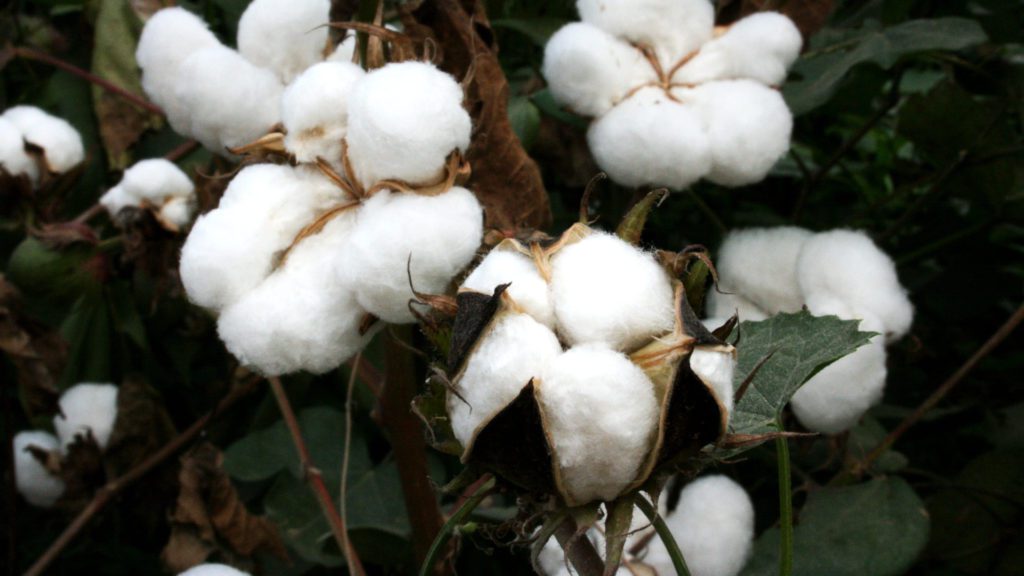
Cotton is a natural fiber that has been used since 5000 B.C. in India and is mostly composed of a fluffy, soft material called cellulose, an immature, green unopened cotton boll. Typically, the word “cotton” refers to what is inside the “boll” or rounded flower-type husk that hangs from the vines. It sits in the sun, ripening from a softer green lime color to a tan coarser shape with “petals” that open to expose the white cotton inside, which typically sprouts out in clumps.
The first cotton gin was in India in the 13th century, and this tool was used to separate the soft cotton fibers from the plant’s seeds. Eli Whitney’s cotton gin of the late 1700s in the United States reduced its time to pull the cotton fibers from the cotton seeds. Previously taking about 600 hours to extract one bale of cotton, it now took only 12 hours!!!
Cotton can be grown in many tropical and sub-tropical regions of the world, including the U.S., Turkey, Egypt, Brazil, and India. In the United States, Texas produces most of the cotton, with the northern “South Plains” region being the state’s largest, continuously-grown cotton area in the world.
100% Supima Cotton No Iron Sateen Sheets – 400 Thread Count in Deep Sea Navy
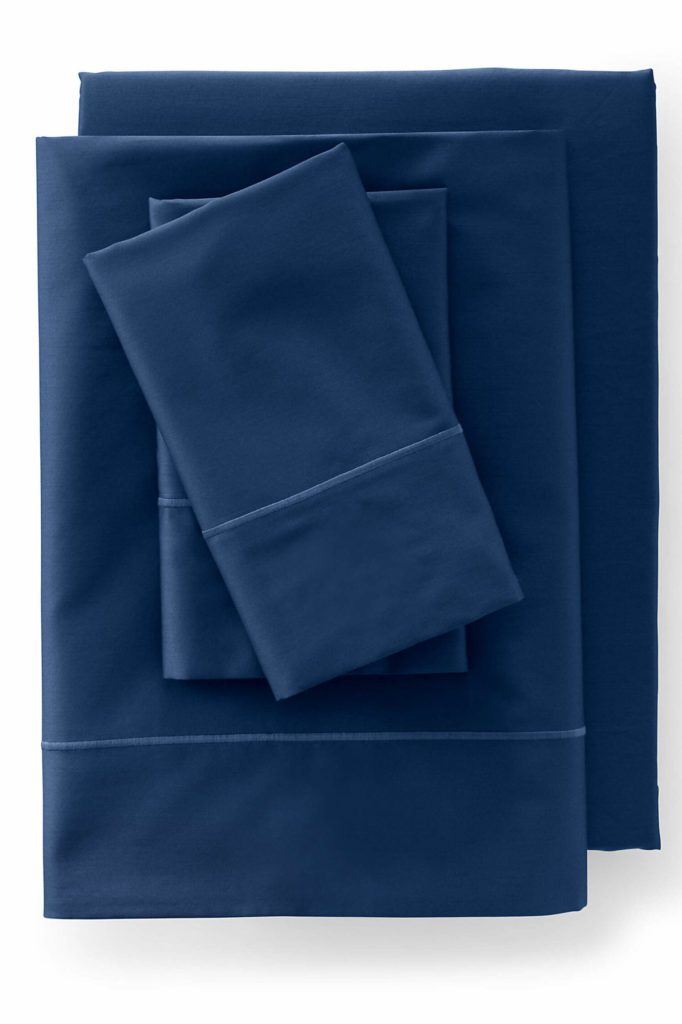
Land’s End is a veritable treasure chest for Supima cotton sheets at an affordable price. You must check them out and purchase a set today! I have two sets and they have lasted years and continue to help me sleep well. Get these today at Land’s End!
- I love this deep, murky blue color that reminds me of a moonlit night in the middle of a lake or diving down into dark blue waters encased in a silken submarine. It comes in many gorgeous colors, and all have an elegant hemstitch in a coordinating color.
- Certified 100% Supima Cotton – you know it is Pima first!
- A must-have elastic band all around the bottom sheet
- This is a Sateen weave that is fiber-treated to resist wrinkling-400 thread count makes it sumptuous!!
- Deep pockets fit 18-inch mattresses
Cotton is Cotton is Cotton is NOT!
Many people don’t realize how time-consuming it is to produce a fabric that is 100% cotton- I surely didn’t. It is a process with many, many steps – and it is why different kinds of cotton are so unique. Not only that, but other manufacturers, growers, and finishers all have their own special methods of doing every single task! That can surely account for why there is so much variation in cotton quality when it seems like it should be simple!
Cotton has to be planted, cultivated, ripened, picked, baled, stored, shipped, separated from the seeds, cleaned from dirt and lint, compressed, stored again, and only THEN sent to the textile mills! Then a whole other process with the cotton starts! The mills may clean the cotton again, then they fluff up the compressed cotton shipped to them and either “comb” it or “card” it before it even gets on the spool!
Be wary of some fabrics that are labeled as Pima but are not. Due to the popularity of Pima cotton over other types, some unethical manufacturers have started labeling their products as Pima. They cannot do this with “Supima” however, as this certification is easy to trace.
100% Supima Cotton Scallop Sheet Set with Contrast Stitching in Soft Mojave Rose
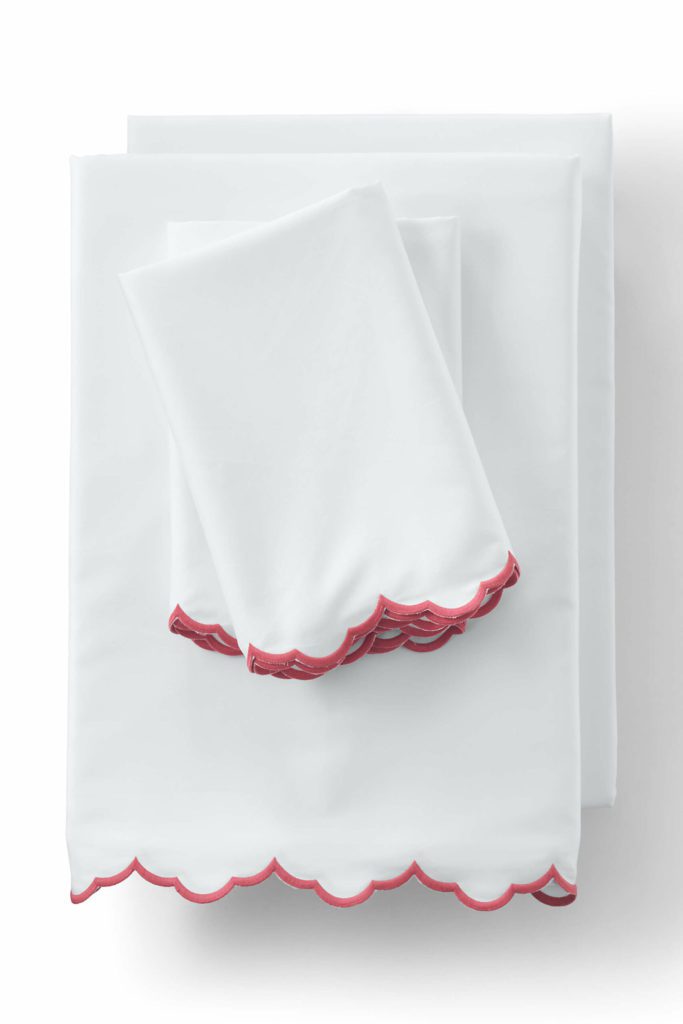
Delicate and curvy embroidering adorns the edges of this Supima cotton sateen sheet set and gives it a whimsical elegance and it is oh-so-pretty!
- I have this sheet set and it has become my go-to comfort (like “comfort food”)!
- Two years it has stood the test of tugging and stretching and washing and drying, and still comes out of the dryer looking un-wrinkled. Amazing.
- It has a 400 thread count and keeps me toasty warm in the winter. My room tends to be colder in the winter and hotter in the summer – (perfect conditions to test sheets)!
- The fabric literally drapes around me like silk and still manages to feel “fresh”. All seams and stitching are as they were when I bought them, and they fit my bed perfectly.
- All-around elastic keeps the edges from popping off during the night – which I love.
- I highly recommend this sheet set for lasting style and performance.
- Choose your color with this beauty at Land’s End.
Different Types of Cotton
1. Pima Cotton
This is known to be the finest cotton in the world. Only 5% of all cotton grown is Pima Cotton. Pima Cotton grows in Peru, Australia, and the American Southwest. It comes from the plant Gossypium barbadense and has fextra long fibers- 34 millimeters, compared to most cotton fibers wthatare less than 20 millimeters long!
As with anything, if you look hard enough, you will find the positives along with the negatives. I looked long and hard into Pima cotton and trust me, it is very hard to find anything detrimental about it! Here is what there is!
Pros of Pima Cotton
- Color dyes last longer in Pima Cotton due to the purity of the fibers
- More breathable than other types of cotton – having more air between fibers
- Naturally pure and clean, environmentally friendly
- Temperature regulation is excellent, so you don’t get too hot or too cold – they are very absorbent
- Powerful fiber, resistant to snags and pills, long-lasting with less wear and tear
- It can be used in the washer and dryer
- There is no electricity conducted with cotton, therefore there is no static-cling!
Cons of Pima Cotton
- Price, price, price. Experts and consumers agree that the only negative factor about Pima Cotton is the price that you will pay for a premium product. However, some experts don’t even consider price to be a deterring factor. The amount of use and the long-lasting appearance of sheets and clothing with Pima Cotton makes it well worth your money. If you don’t like to give your sheets up or your sheets rip or fade, then Pima is a great investment. Think of how many times you have bought sheets in the past five years, and average out the cost per year. Chances are you are getting your money back and then some!
One thing that sets Pima (and Supima) cotton apart from other high-end textiles is that it can be washed in warm water and tumble-dried. Most other high-end textiles have to be dry cleaned or washed in cold water and air-dried. One thing you want to avoid is using fabric softeners because they can actually damage the cotton and break down the finish of your sheets, making them less soft over time.
It is well worth the investment as you will more than make up your money by not having to constantly buy more sheet sets!
Eider & Ivory™ 450 TC 100% Super Soft Pima Cotton Sateen Sheet Set With Deep Pocketed Fitted Sheet
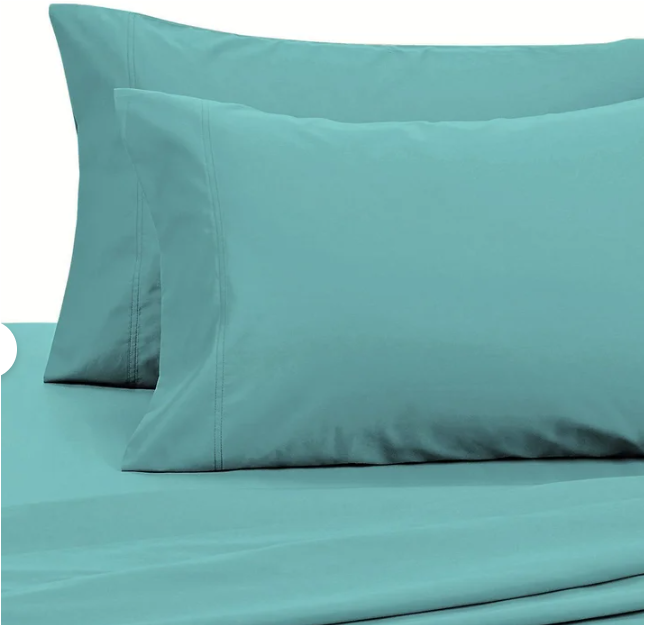
Dusty Turquoise is the color of this pure Pima Cotton sheet set in sleek, smooth sateen.
I love the bright, cheery color of this very artsy boho look – like you are jumping into the Caribbean! Not a lot of quality sheets are offered in this hue, so this is a great find!
- It has a 450 thread count, making it more dense and lustrous, perfect for cold weather or drafty rooms.
- It is machine washable and can be put in the dryer.
- The only downside to this is that it only fits mattresses up to 14 inches high – I would expect more from this brand.
Pretty jewel tones and neutral colors are available at Wayfair!
Supima Cotton
Supima Cotton is still Pima cotton (the highest quality); it just hasn’t passed the extra-incredible standards needed to be branded Supima. Pima is still the world’s best cotton. Supima standards just take Pima cotton one step further.
Supima is a brand name of Pima cotton. It is not a separate type of cotton, but rather it verifies that Pima Cotton growers and manufacturers in the United States (in Texas, California, Arizona, and New Mexico) have adhered to more strict regulations regarding production and types of certifications for their cotton.
It bears the name ASA, which stands for the American Supima Association. These regulations are different than those used for regular Pima cotton.
So, you could say that Supima cotton is Pima cotton that has been extra carefully produced and finished, using more refined and time-consuming methods than regular Pima cotton.
Supima cotton is often used as a substitute for silk! Also, many manufacturers will combine silk and Supima cotton because they feel so similar, and the Supima cotton actually gives the silk more durability.
- All Supima cotton starts out as Pima Cotton. Then it goes through many processes that are the highest level standard there is. Then it gets to be branded Supima. Make sense?
- Much more of the Supima cotton production process is done by hand compared to the widespread automation of most cotton. This makes processing the cotton minimal and it has less of an impact on the environment.
- The great benefit of having a Supima verified fabric is that the pilling is almost non-existent! Supima cotton has the greatest longevity of any type of cotton and experts have noted that it goes decades without any felting or pilling – and no signs of wear and tear! That\’s enough to sell me on it!!
If it has the Supima label, it means it is genuine and traceable – no wasting money on items that say “Pima” but aren’t 100% accurate!

Something to help you ensure your sheets are the best Pima cotton is to look for the “PimaCott” brand. This Pima cotton has been carefully monitored from farm to store to verify it is 100% pure Pima Cotton.
Pima cotton sheet aficionados agree that if you want all the durability, softness, and luxurious aspects of cotton without the high price, choose 100% Pima cotton; this will give you all the longevity and wear resistance with a heavenly feel. Just be sure to verify the materials.
If you buy Supima cotton, you are assured it is genuinely the best cotton you can get on earth, with just that little extra of everything that Pima cotton offers. And, you will pay up to 3 times as much for Supima as you will with Pima cotton.
But if you are like me, and love to get into bed with the softest, coziest, most comfortable sheets there are – AND like the fact that you never have to worry about them wearing out – then buy Supima Cotton!
SFERRA 100% Pima Cotton Cassy Sheet Set at Horchow
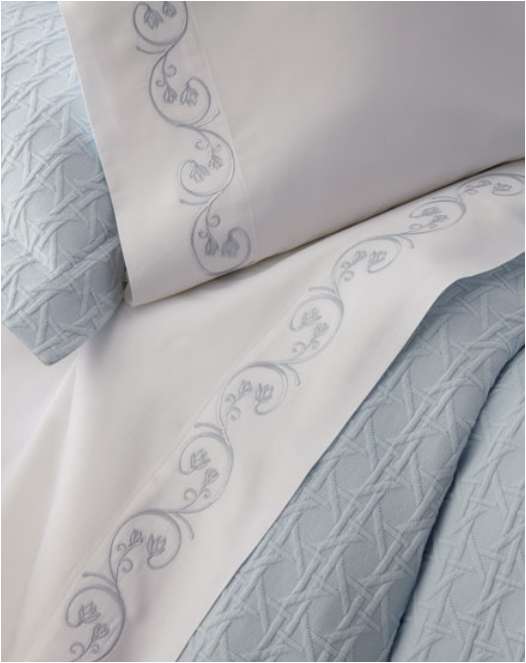
The SFERRA name is well known for craftsmanship and quality.
First known for intricate Venetian lace collars and cuffs, Gennaro Sferra founded the company in the early 1900s on 5th Avenue in New York City.
This does not have a thread count on it, but it is listed as 100% Pima Cotton, which in this case, due to the Sferra name and its reputation for exclusive luxury sheets, I will believe!
My favorite feature is the scrolling vine embroidery that delicately graces the hems in a grey sheen.
This is a unique design, and I love having one-of-a-kind things!
Find this fabulous sheet set at Horchow!
2. Egyptian Cotton
Ah, Egyptian Cotton. So much has been said about this kind of cotton that many people believe it is the most highly sought-after cotton there is for its other-worldly features. I found that this is not so. So much in fact, that I began to question all the marketing that has been done to promote this type of fabric. 100% pure Egyptian cotton. Okay, so this just means the cotton was grown in Egypt.
It could just as easily be Short-Staple cotton or even Long-Staple cotton. That is still inferior to Pima cotton by a long shot. Unless you see specifically that your sheets are made with “100% Giza 45 cotton” and have some sort of verifying certification with that (believe me, if your sheets are made with Giza 45 cotton, the manufacturer will definitely have something to back up that claim – you will be paying a lot of money).
This matters because it is hand-grown and harvested in a very small area along the river Nile. The climate and water sources in that particular region produce the best cotton in the world, as I mentioned above, just as good as, if not better than Pima cotton. This is due to its strength, purity of color, cleanliness, and uniformity. Keep in mind that only Egyptian Giza 45 cotton can be considered as good as or better than Pima cotton.
3. Upland Cotton
This type of cotton makes up 90% of all the cotton produced in the world. It comes from a different species of plant than Pima Cotton. The fibers are short and prone to breakage, have more loose ends, and are easier to fray. Upland cotton is native to Central America and is also grown in Mexico, the Caribbean, and Florida. It is used for denim production, flannel fabrics, women’s personal hygiene products and baby care items.
4. Organic
Organic cotton is grown and processed without the use of toxic, synthetic, and persistent pesticides and fertilizers. Some of the most toxic chemicals known to man are used to process cotton. Organic cotton does not come from genetically altered plants. These standards are verified by third-party organizations that provide certification of organic growing methods. Less than 1% of all cotton grown worldwide is organic.
Sustainability organizations share that thousands of farmers every year become disabled as a result of exposure to these chemicals.
The best way to know if you are getting organic cotton is to look for the Global Organic Textile Standard label.
Hamburg House 100% Pima Cotton Fretwork Sheet Set in Light Blue/White at One King’s Lane
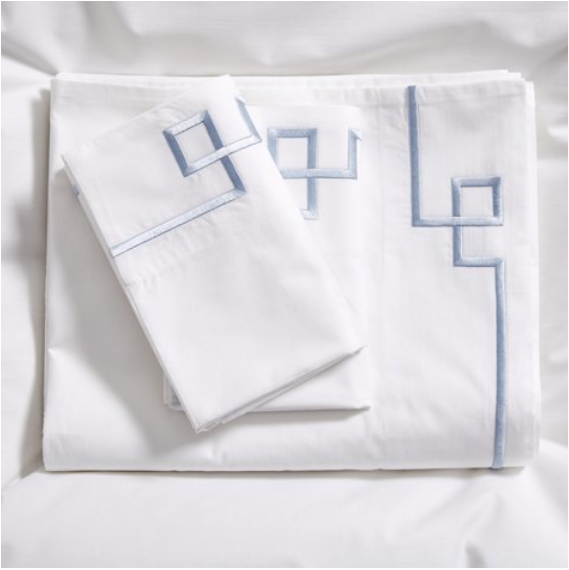
This exquisite sheet set from the master craftsmen at Hamburg House has intricately embroidered fretwork details.
- It is made in Italy of Pima cotton with a percale weave, while the embroidering is done in the USA.
- It has a thread count of 250, which will be soft, crisp, and airy, also extremely durable.
- This would be great for someone who likes cool sheets, who sleeps “hot”
- The care is machine washable but on a gentle cycle with low heat – taking out when damp to finish drying by air.
- I would buy this in a heartbeat as it’s sure to be super soft, incredibly strong but light, and have that timeless elegance and style that is so hard to find. This is luxury at first glance!
Check this out at One King’s Lane.
Pima Cotton Sheets and Thread Count
Terms and Facts about Pima Cotton
- Uniformity of fibers: This measures how alike the fibers are, meaning how much irregularity there is from fiber to fiber. The more uniform it is, the more smooth and silky it is.
- Length of the fiber: This matters because of the strength of the fabric. The longer the length, the more resistance to breaking the fibers have. Egyptian long-staple cotton produces the strongest fabrics in the world.
- The fineness of the fiber (the diameter): How fine fiber is matters because more fibers can naturally fit in one inch than others, contributing to the fabric’s strength. Finer fibers also mean more softness.
- Cleanliness: I couldn’t believe this one, lol, but it makes sense now. If the fibers have more exposure to unnatural elements or have many leaves or bugs tangled in them, there will be much more cotton handling to get all those impurities out. Machines are also used to remove impurities. All this “rough” handling over and over again weakens the fibers, breaking them and causing more “ends” and shorter fibers. This leads to poor quality and less softness, and low durability of a fabric.
- Purity of color: This matters, again, because if the cotton needs more handling and chemicals to dye it back to its original color, this will weaken the fibers, causing them to break much more easily.
- Ply is the number of fibers or yarns twisted into making one thread. One-ply or single-ply threads are longer and stronger.
- Hand-harvested: This matters because hand-harvesting the cotton fibers allows the integrity of the fiber to remain intact, while machine harvesting is very harsh on the natural fibers. Hand harvesting also allows the skilled gatherers to assess the maturity of the cotton plant. A more mature cotton plant will produce the longest fibers with the most strength.
- Spinning: The spinning of the fibers into yarn is all done by carefully crafted techniques used by skilled artisans to spin the fibers into yarn to be used to make the fabric. The skilled artisans have the knowledge and ability to make the most of this prized natural resource.
Thread Count
Ahhhh, thread count. Thread count is used heavily in marketing to espouse the benefits of buying a certain sheet set. It would appear to the shopper that the only thing that mattered in finding a good quality sheet set was the thread count! Not so, as I discuss.
All things being equal, and starting with 100% verified Pima cotton (like PimaCott branding), we can talk about thread count!
- Thread count is measured by the number of threads in one square inch. Something important to remember is that it doesn\’t matter how high your thread count is if the quality of the fibers and finishing process is poor.
So, on a fundamental level, it is mostly about the raw materials used and the finishing.
- If long-staple cotton is not used, the fibers will be shorter, probably mismatched due to lesser quality, and even if the thread count is 800, the weave is subject to fiber breakage, unraveling, and holes. It also won’t be as soft.
- Sometimes manufacturers will use another fiber, such as polyester, to compensate for the quality of the cotton. This will make the fabric more durable, but you will sacrifice other aspects, such as breathability, pilling, and purity.
If you have excellent quality fibers and a higher thread count, then that is a safe bet your sheets will be durable and probably soft.
100% Supima Cotton, 500 Thread Count Sateen Paisley Print Sheet Set in White/Powder Blue
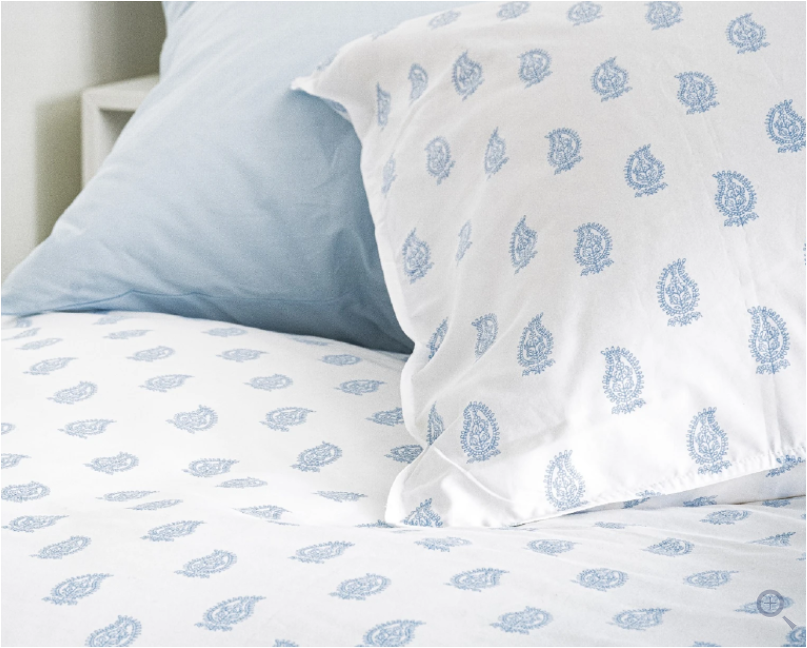
Verified extra-long-staple Supima cotton provides you with the utmost in luxury, softness and restful sleeping. Be assured that what you pay for is what you are getting with the Supima branding.
- This has a high thread count of 500 and a sateen weave that even the coldest winters will avoid.
- There is an elastic around the bottom sheet, and it fits mattresses up to 16 inches high.
- I really like the colored paisley pattern for some detail and depth on the bed, and it comes in three colors for all style themes.
- Getting into bed for me is like a reward at the end of the day, and I like my sheets to drape over me in a glossy, velvety texture. This one fits the bill perfectly!
Get a set today at Linger.
Beware of Super-High Thread Counts
So, we’ve talked about how a higher thread count in sheets does not necessarily equate to a higher quality sheet. Marketers have filled the shopping arena with low-cost, high thread count sheets, touting them as being better quality. Aside from a questionable fiber quality, I wasn’t even aware of another aspect until many years into my sheet set sprees.
Ply
Many times, the reason that the sheets have such a high thread count is because of a tactic where low-quality fibers (therefore low-quality threads) are used for weaving, but since the fibers are of such low quality, it allows the manufacturer to twist 2 or 3 of them together to make one thread. This means a fabric could be 2 or 3 PLY, which sounds good, but if you think about why it needs to be 2 or 3-ply, the phrase starts to lose its luster.
This also allows the manufacturer to count each fiber as a thread, falsely bumping up the thread count.
Imagine walking into a beautiful shiny bedding section of a department store and having someone come up to you, leading you toward some elegant sheet sets, holding one out to you.
The person says, “When I made these sheets, I had to take 3 fibers of short, dirty, weak cotton so that I could actually make one thread that didn’t come apart – and then I took that one thread and wove it into a fabric that was 200 thread count (of coarse and fragmented fibers) – and then I called it 600 thread count because I had to take 3 wisps to make a thread so I fudged it – and now I put a higher price on this because when you see 600 thread count you will pay more for it”. Would you buy that sheet set? No, I don’t think so.
So, be wary of these “900 thread count” sheet sets on sale for $39.99. Chances are, they won’t be as soft and won’t last as long as a well-researched 300 thread count sheet set.
Supima Cotton No Iron Sateen Printed Sheets – 400 Thread Count
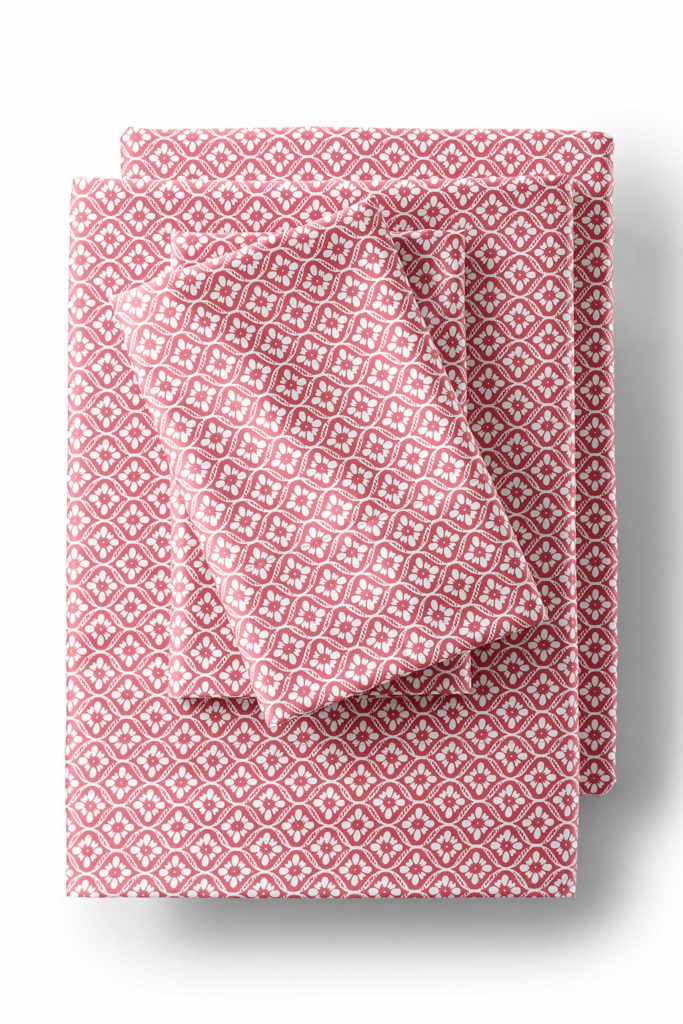
These are such pretty sheets in a soft Mojave Rose-colored pattern. It is uncommon to find Supima Sheets in such bold colors and patterns, and that’s what I love about these sheets!
Land’s End combines certified 100% Supima Cotton with class and color and style! This is the best cotton in the world, made to last for decades! It will only get softer with each washing as high-quality cotton does, and it won’t rip or fade or unravel!
- There is a 90-day return policy – for any reason!
- Fibers are treated with a no-wrinkle finish before they are woven to ensure these sheets stay without wrinkles right out of the dryer!
- Machine washable
- It can also be monogrammed!
- The deep-pocketed sheets fit mattresses up to 18 inches – yes, finally!
Choose your color today at Land’s End!
Legends Hotel™ Supima® Cotton Wrinkle-Free Sateen Sheet Set in Wisteria from The Company Store
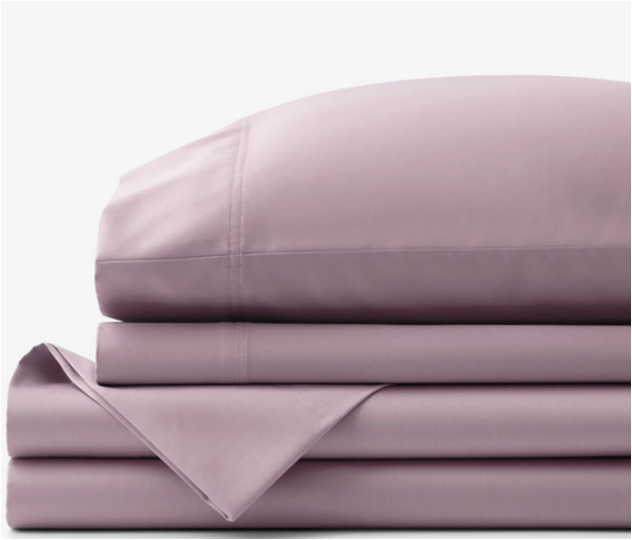
This is one of my ultimate favorite stores for its commitment to quality and customer service.
- It is evident in this 450 thread count 100% Supima Cotton Sateen fabric. You simply can\’t buy any better cotton sheets. The Sateen has unique breathability that allows even hot sleepers to enjoy restful hours under the covers.
- OEKO-TEX Standard Certified for safety and health is a big plus!
- This color literally drips and melts into your bed, enticing everyone who sees it to touch it.
- These are also machine washable!
- These are super smooth and truly wrinkle-free.
You can see over 20 colors at The Company Store!
Less Than Desirable Cotton and What You Can Do About It
Unfortunately, a lot of the world’s cotton is grown in areas that have few resources for producing high-quality cotton. There are no benefits to anyone in that area to grow and harvest in an eco-friendly or sustainable way. The poor conditions make it vulnerable to practices that use questionable methods – from the labor sources to the chemicals used.
There is a rising trend in the percentage of people looking for companies that have higher ethical standards and more environmentally conscious practices. One such verification that can be found that addresses these growing concerns is The Fair Trade Commission label. The Fair Trade Commission advocates for transparency within the supply chain. From tracing the origin of the items to documenting their destination. Look for the Fair Trade Certified label when buying to ensure that factories and working conditions are monitored and assessed frequently. The Fair Trade label also signifies that the workers have a voice and a direct line of support.
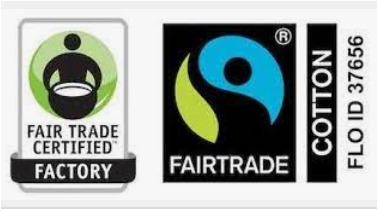
Another very commonplace practice is to have the words “100% pure cotton” on the label. This tells you the contents are cotton, but it doesn’t tell you what the quality is. It could be super short fibers from the leftovers of combed-out higher-quality cotton. It could be very dirty, and most likely the short, weak fibers are twisted together to make one thread, which means the ply of it is “multi-ply”. We know that single ply thread is the strongest and longest staple cotton, producing a superior fabric.
Bottomline: Pima Cotton Sheets
You absolutely cannot go wrong when you buy Pima Cotton sheets. Look for the brand “PimaCott” to ensure it is Pima cotton you are getting, and read the fine print. In my days of research, I have found many sheets labeled Pima cotton only to look at the specifications and see another sub-standard cotton listed in the materials! Unbelievable.
My bet would go toward a Supima Cotton sheet set, as that way, you are ensured by a traceable certification that you are getting the premium product and all of the benefits it brings.
Land’s End has a huge variety of Supima cotton sheets in scallop patterns and stripes and florals and solids. They have the most extensive choice available under one roof I have found. Their brand reputation, money-back guarantee, deep pockets, certified cotton, and bright elegant sheets for not a lot of money are my first choice.
I hope I saved you some work and dispelled some myths, and you could find something that fits your tastes, needs and budget! Happy Sheet Shopping!
